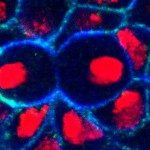Lien vers Pubmed [PMID] – 31163171
Dev. Cell 2019 Jun;49(5):659-677
Self-organization is pervasive in development, from symmetry breaking in the early embryo to tissue patterning and morphogenesis. For a few model systems, the underlying molecular and cellular processes are now sufficiently characterized that mathematical models can be confronted with experiments, to explore the dynamics of pattern formation. Here, we review selected systems, ranging from cyanobacteria to mammals, where different forms of cell-cell communication, acting alone or together with positional cues, drive the patterning of cell fates, highlighting the insights that even very simple models can provide as well as the challenges on the path to a predictive understanding of development.


